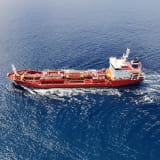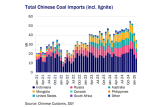
We start the first month of the year with several updates by the Japan Maritime Sector towards decarbonization through Ammonia fuel.
Whilst the challenges of toxicity and establishing a green Ammonia value chain remain, there are high hopes on Ammonia becoming the next generation marine fuel given that it emits no CO2 when burned.
Acknowledging that it is a necessary step to get to their goal at a much quicker pace, the Japan Maritime Industry has come together since last year to tackle the challenges of using Ammonia as a marine fuel.
There’s a range of expertise that each player can bring to the table. For instance:
- Shipyards providing their technical construction expertise
- Shipowners (and Ship-managers) giving insights on actual operational handling onboard vessels and its commercial application
- Class Society (NK) assessing risks and coming up with the right guidelines for safe handling
- Main Engine Manufacturers putting together domestically produced ME systems that work safely and efficiently
With the collective strength of the industry, it does appear that we have now moved on to the next phase of realistically commercialising Ammonia as a marine fuel source.
NYK has set a bold target to construct 15 ammonia fueled vessels within their fleet by 2033. This will be a mixture of ammonia carriers, car carriers and large bulkers (Panamax’s and Cape’s). This week, it was announced that a consortium led by NYK, along with IHI, J-ENG, Nihon Shipyard and Class NK, has developed the world’s first medium sized Ammonia Carrier equipped with domestically produced Ammonia-Fueled main engines. Orders have been placed and this 40,000-cbm gas carrier is expected to start delivering from 4Q 2026. The significance of this is huge as it provides the blue print to build ammonia fueled vessels beyond just ammonia carriers, but on to other ship types also. It addition, this marks the first step into building an ammonia value chain, whilst forming international rules and standards for the use of ammonia as a fuel on ships.
A next consortium is led by Idemitsu Tankers along with Iino Kaiun, NYK, and Nippon Shipyard (NSY). It has the goal of reducing more than 40% greenhouse gas (GHG) emissions for VLCC’s. The group has pooled together its expertise to come up with effective designs using alternative fuel sources (including Ammonia) and also onboard carbon capture (OBCC). We understand that they are now beyond the conceptual stage and we can expect actual construction shortly.
We believe that the rising popularity of Ammonia as a marine fuel source will continue this year and more of such newbuilding orders will be placed.
By Eugene Quek, Partner & Head of Projects in Japan.
Articles
You may also be
interested in
View allGet in touch
Contact us today to find out how our expert team can support your business













